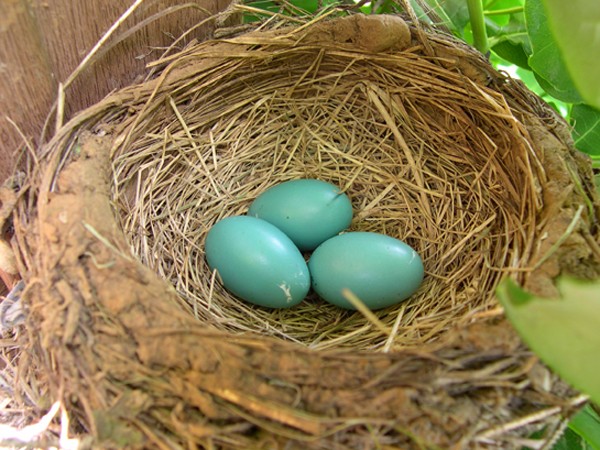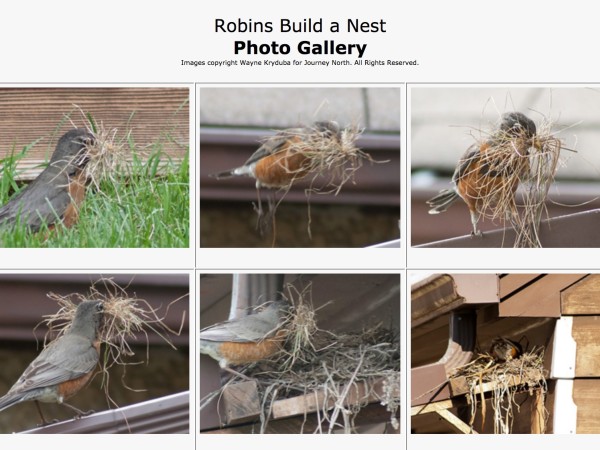How to Build a Robin's Nest
A robin in North America goes through the nest-building process two or three times a year. They are expert builders! Some robins can live up to 12 years, according to banding studies. These birds may have built 20 or even 30 nests over their lifetimes!
Robins don't need written instructions for building their summer homes. They follow the "nest-building blueprints" in their brains, and instinctively know how to build the perfect structure to hold the eggs they're about to lay. Robins' nests are always alike, but have you ever seen a robin teaching another how to build a nest?
Imagine you are a robin. Follow the directions below to discover how challenging it is to build your nest.
Nest-Building Directions
1. Find a Suitable Site
The site should be protected from sun, wind and rain. It can be anywhere from ground to treetop in height; the site must be on something sturdy enough to anchor the nest securely in place. You don't want your nest to fall off! Your nest should also be very close to a good feeding spot so you can easily find worms while keeping an eye on it, and it shouldn't be too far from water. Choose a spot that is hard for predators to see. Remember, you and your eggs and babies will be sitting here for the next 5 weeks, so be careful to pick a spot that's safe, cool, and comfortable.
2. Gather Grass and Mud
Collect about 350 dried fibers of grass and small twigs that are about 6 inches long. The pile of grass and twigs should weigh about 135 grams.
After a soaking rain, take beakfuls of mud back and forth to your nest site a few hundred times. (If you happen to be a person rather than a robin, you might substitute your hands for a beak to collect the mud, but don't forget that it takes a pair of robins hundreds of visits to build the nest!)
3. Weave, Adhere, and Sculpt
Weave the grasses together, cementing them to each other and to the supporting branch or windowsill with mud. Next, use your tummy to shape the nest into a perfect baby cradle. Finally, line the inside with the softest grasses and hairs you can find so the eggs will stay warm and not get pierced by any twigs or sharp grass edges. The nest must be tight and snug enough to cradle the eggs and hold in your warmth, but large enough to hold four or even five BIG nestlings.
When you are finished, your nest should weigh about 205 grams when dry. (Of course it will weigh more while the mud is wet!) This is a heavy nest. But four nestlings together can weigh as much as 280 grams before they leave, so your nest must be very strong!
Quality Check
The perfect robin nest must serve as a snug baby cradle to keep the eggs and babies warm, dry, and safe with room for you (the mother robin) to hunker down to incubate your young. You weigh about 77 grams. Each of your eggs weighs about 6.3 grams when newly laid. Each baby weighs 5.5 grams when it first hatches.
The babies will grow tremendously during the next 9-10 days. They will weigh at least 70 grams before they start losing weight a few days before fledging. Fortunately, by the end of the first week, you (Mom Robin) can sleep on a nearby branch rather than with the babies so it won't get too crowded—unless it rains. When it rains, you have to sleep on top of the babies to keep them dry.
Time to Move?
You've done a lot of work to make this wonderful nest. But after the babies leave, you often have to move out! Even the cleanest robin family can't keep out mites, lice and flies. Once these critters get a head start, they can really multiply fast, making an old nest unsafe for a new batch of babies. You might raise later broods in the same remodeled nest, or you (the female) may build a second nearby nest in 2 or 3 days.
Infographic: How to Build a Robin's Nest
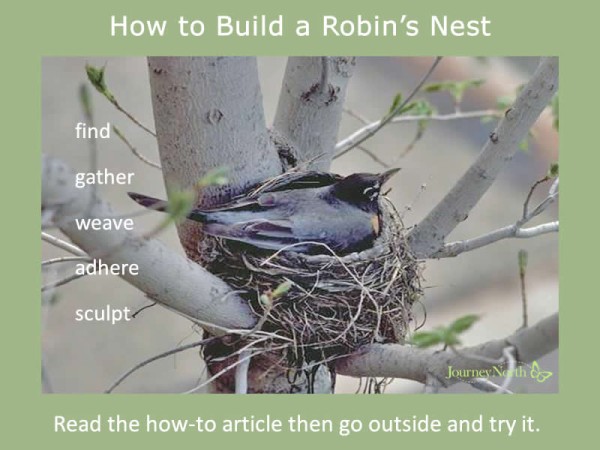
Carrying Nesting Material
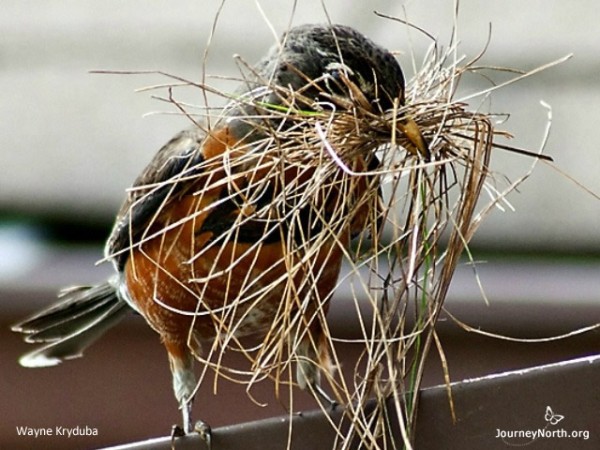
Carrying Mud
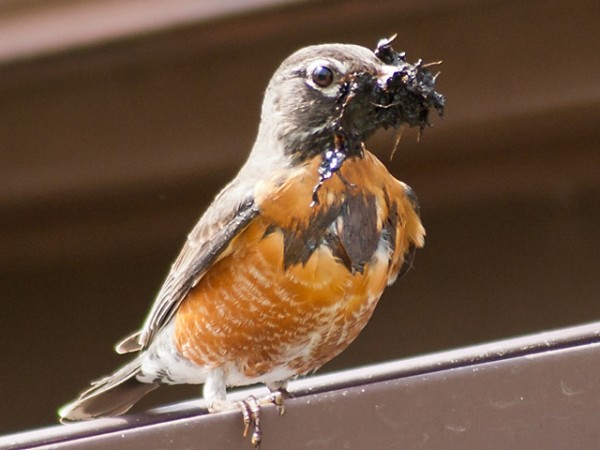
Sitting on the Nest
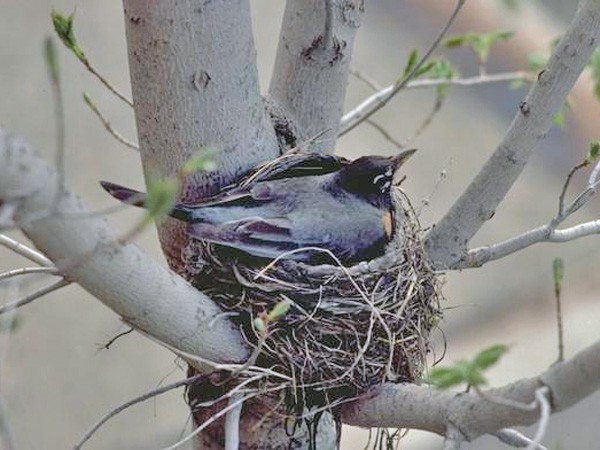
Robin Nest with Eggs
